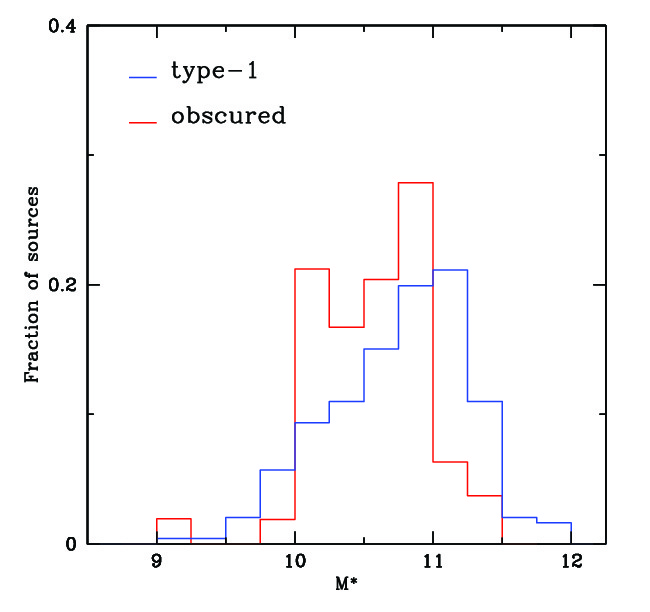
Searching for Compton thick AGN
Finding the most heavily obscured (Compton thick) AGN via X-ray spectroscopy. A large fraction of supermassive black holes at the centres of galaxies are believed to grow the masses behind dense clouds of dust and gas that absorb the radiation emitted by the accretion process and block direct view to the active nucleus. The X-ray spectrum of deeply shrouded AGN shows characteristic features (e.g. shape of continuum, strength of emission lines) that can be used to identify such systems and measure the level of line-of-sight obscuration. As a result the most robust constraints on the whereabouts and population properties of heavily obscured AGN are from X-ray observations.
The top plot shows the X-ray spectrum of a heavily obscured, Compton thick, AGN at redshift z=0.707 identified in the COSMOS extragalactic survey field. Modeling the observed spectrum provides a measure of the line-of-sight obscuration and the intrinsic accretion luminosity. The black curve shows the model that best-fits the data. The measured hydrogen column density of the gas and dust clouds along the line-of-sight is NH>1024cm-2, i.e. in the Compton thick regime.
The bottom plot compares the black hole masses of heavily obscured vs unobscured AGN in the COSMOS field. There is suggestive evidence that obscured AGN are associated with smaller black holes and higher Eddington ratios compared to unobscured systems of similar accretion luminosity. This is consistent with black-hole formation models in which obscured AGN represent an early phase of black hole growth, i.e. young AGN. More details in Lanzuisi et al. (2015).
